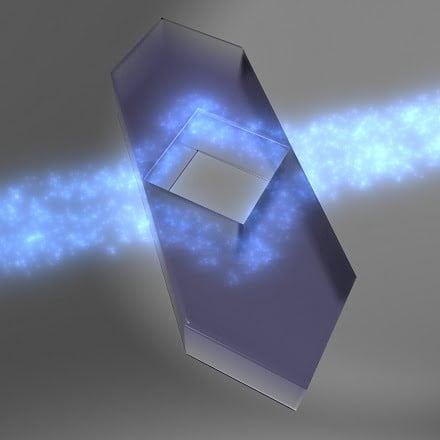VALENCIA, Spain, Jan. 24, 2017 — Researchers have devised a new cloaking device that could conceal aircraft in fog or a submarine in the sea. Both the fog and the sea serve as diffusive environments in which light is not propagated in a straight line, which makes this cloaking technology possible.

Recreation of the operation of the layer of invisibility devised by the researchers. Courtesy of UPV/NUP.
Researchers at the Valencia Nanophotonics Technology Center and The Public University of Navarre (NUP) have simulated this new invisibility cloak, and lead researcher Bakhtiyar Orazbayev said they will soon begin building it.
“It would be fairly straightforward because all we would need is two different materials with a specific diffusivity,” said Orazbayev. “By playing around with them we would be capable of producing the cloak that would cause the light to circulate around the object in such a way that the object would end up hidden. We could achieve perfect invisibility; but only for diffusive atmospheres, of course.”
Scientists have discovered that producing a device of this type is difficult both fundamentally and technologically.
“It has recently been shown that this difficulty disappears if the object one is intending to conceal is in a diffusive environment. In this case, and unlike in nondiffusive atmospheres, it is possible to build, in a fairly straightforward way, invisibility cloaks of a macroscopic size that work for any light direction and on a high bandwidth,” said researcher Alejandro Martínez-Abiétar. “However, the cloaks proposed so far do not work properly when the object is illuminated by short light pulses, essential in a large number of applications.”
Using transformation optics, which enables one to know which material is best suited to creating the cloak and concealing the object, the researchers hope to solve this problem very soon.
The research has been published in the journal Physical Review A (doi.org/10.1103/PhysRevA.94.063850).
